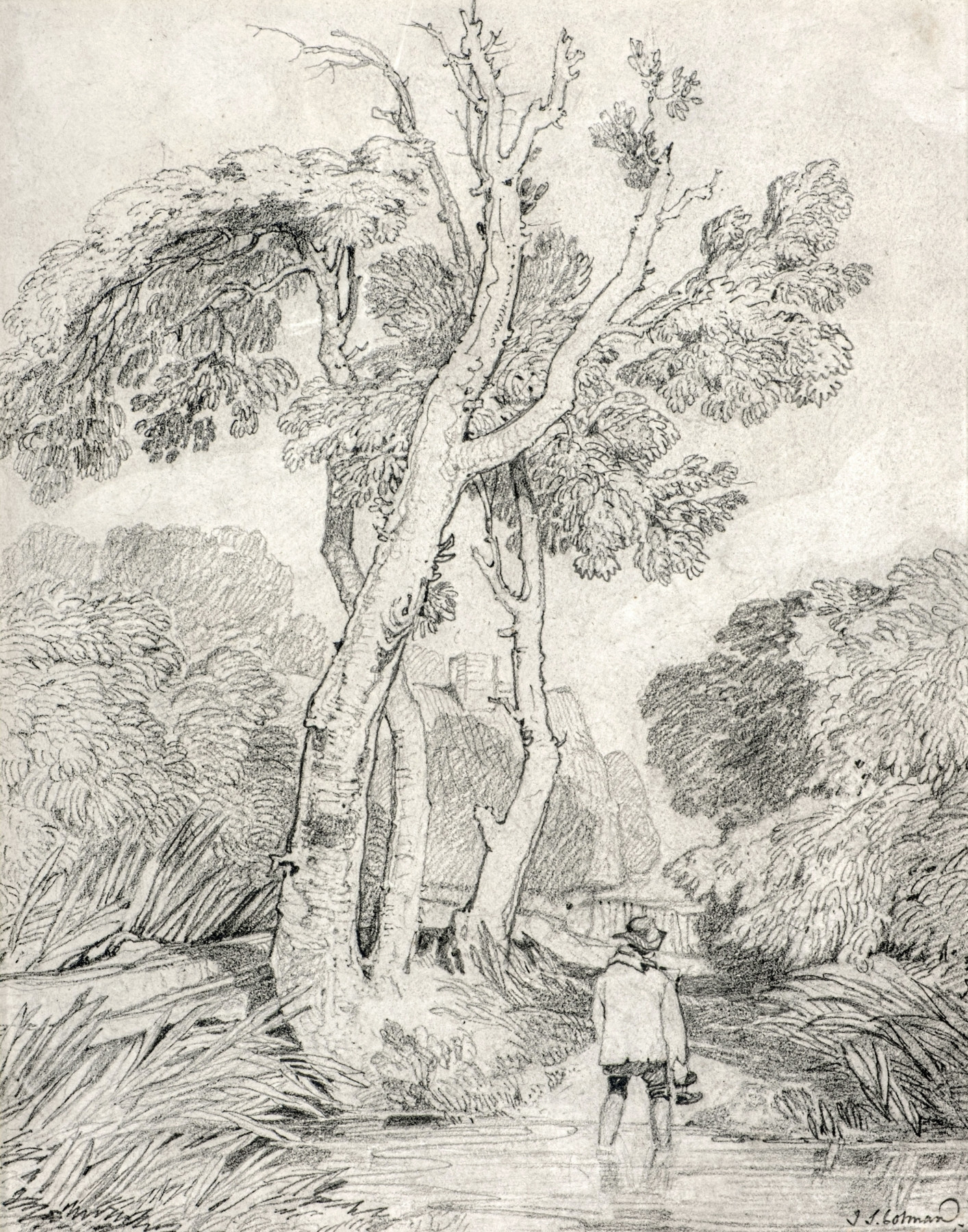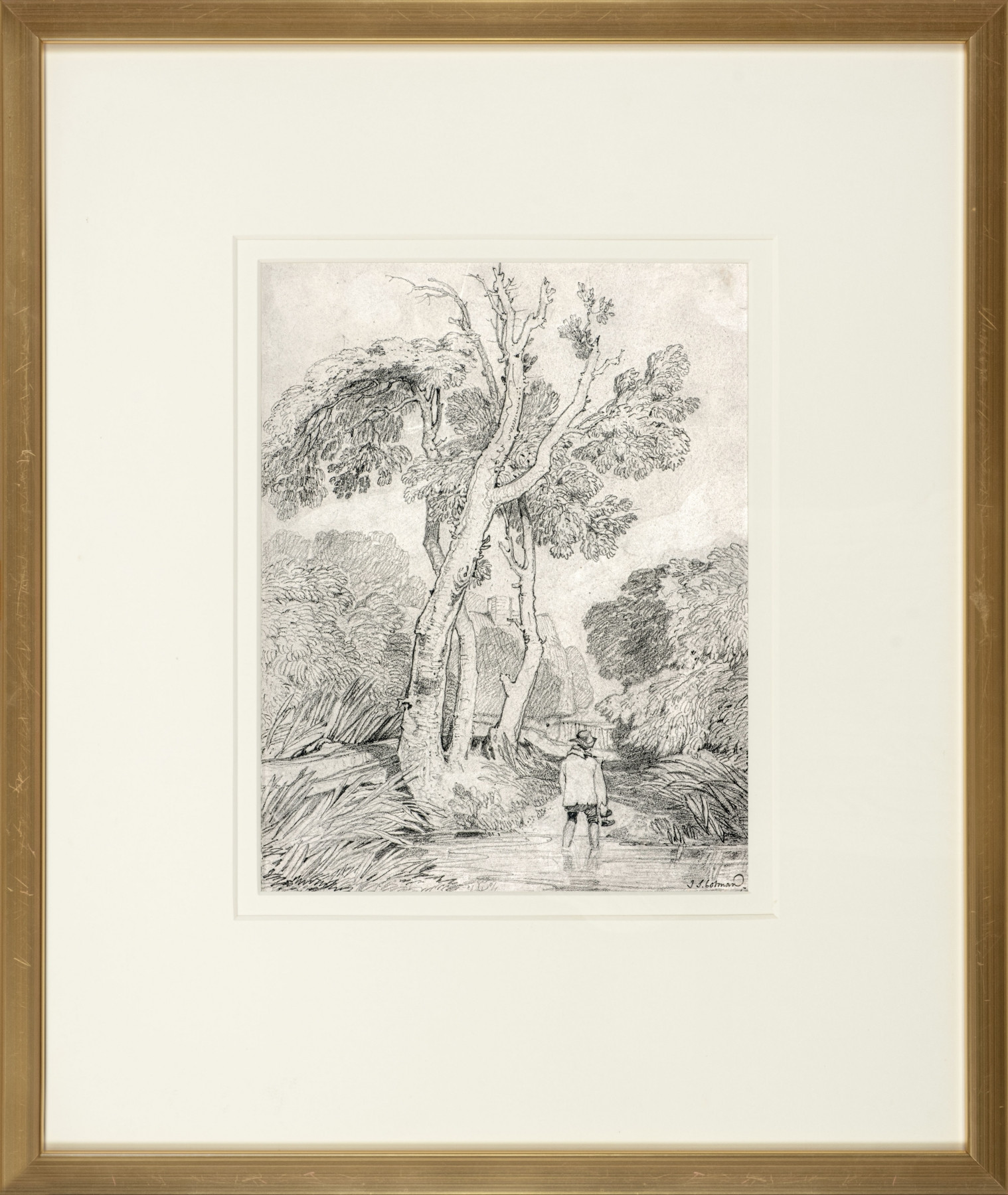

This charming vignette of rural life in Norfolk depicts a man wading through a stream, carrying his shoes. The path in front of him runs down into the water, showing this is a crossing that is regularly used. Beyond the majestic group of three intertwined tree trunks appears his likely destination, a thatched cottage sitting within a fenced enclosure.
Cotman loved nothing more than to bury himself in a quiet spot in the countryside and draw. For people who lived on the land, life may often have seemed a succession of hardships, but the artist suggests that the beauties of nature could provide at least some solace.
1811, the year countermarked into the Whatman paper, was a momentous one for Cotman. He had just completed his first set of etchings. As a virtually self-taught printmaker, this had not been without its challenges and struggles. Then, Cotman was invited by the banker Dawson Turner to leave Norwich for Yarmouth, to teach drawing to his wife and daughters. Cotman hesitated for some time, but with a growing family of his own, and only modest success to show for more than 10 years as a professional artist, he eventually gave in.
Though based in a remote coastal town, printmaking was Cotman’s way of reaching wider audiences. Buoyed by the favourable reception of his latest project, The Antiquities of Norfolk, he began to consider an appeal not merely to the local, antiquarian market, but to a wider public, with an enterprise which raised landscape to a level with history, poetry and philosophy. Cotman may have been a subscriber to J.M.W. Turner’s Liber Studiorum, begun in 1807, and this was his response. He opted for the medium of softground etching, making plates based on some of his most sophisticated drawings. He began in 1814, and continued for the next three or four years. Revived in the 1820s, the series only saw the light of day in 1838, when the publisher H.G. Bohn, to stress the Turnerian roots, chose the same title, Liber Studiorum.
The ford was not included in this compilation, but it might well have been. A single figure, immersed in a lush setting of trees and foliage, is common to several of the plates. For the group of trees, Cotman alluded to drawings by Claude, which were being published in an ongoing series by Richard Earlom as a supplement to his etchings of Claude’s Liber Veritatis. There is also a disguised echo of the trees in Titian’s The assassination of St Peter Martyr, widely considered the greatest of Renaissance landscapes. While the twisting trunks were regarded as a perfect reflection of the violence of the foreground action, for Cotman to have made the reference here is perhaps ironic, or even comic, when the farmer is suffering the mild inconvenience of wet feet rather than the anguish of martyrdom.
Timothy Wilcox